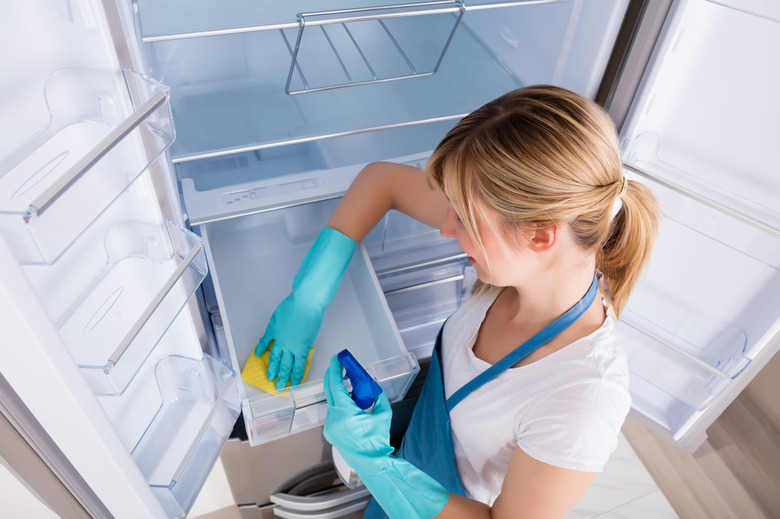Is Refrigerator Mold Dangerous?
Some molds are an integral part of the food on which they grow, like the mold that makes blue cheese or the white mold that forms a thin layer on the outside of hard salami. But some mold in the refrigerator can be dangerous. Such molds ruin food and can cause negative health effects ranging from allergic reactions to cancer.
Tip
Refrigerator mold can be dangerous to your health, whether it's growing on the food or on the refrigerator itself.
How Mold Grows
Almost everyone is familiar with the blue, green, gray, or black fuzz that signifies mold growth. What many don't realize is that surface mold is basically the "seed head" of an organism growing deep beneath the surface. Molds are not plants, but you can visualize them as having roots reaching into the food, stalks growing above the surface and spores, which act like seeds, growing at the top of the stalk. These deep roots may infiltrate soft foods even where surface mold is not visible.
Mold on Refrigerated Foods
Since some mold is dangerous to human health, with a few exceptions, you should discard any food in the refrigerator with visible mold. Grains, nuts, and produce all can support the growth of mycotoxins, which sicken people. One group of mycotoxins is aflatoxins, which are poisonous and can cause cancer.
The mold growth you see on the surface of food is often only part of the problem. It has root threads that go down into the food that you can't see. Even if you scrape off the visible mold from the top, the food could still have threads, and those threads can have toxins in and near them if you're dealing with a dangerous mold type. All of the food might be contaminated because of this.
In the case of hard cheese and firm vegetables or fruit, it's usually safe to cut away the mold along with an inch of the surrounding food and use what's left if the mold isn't extensive. A coating of mold on hard salami is normal; the meats are safe to eat once you scrub it away.
Mold on the Refrigerator Itself
Mold spreads by airborne spores, so moldy food in the fridge may eventually lead to mold growing on the appliance itself. Clean the inside of the refrigerator to remove the mold by scrubbing it with a solution of 1 tablespoon of baking soda mixed with 1 quart of water and rinsing with plain water. Mold can also grow on the rubber seals around the door. Remove it with 1 tablespoon of chlorine bleach mixed with 1 quart of water.
Preventing Mold Growth
Mold spores spread through the air, on insects, and by surface-to-surface contact, and mold can grow anywhere when there's moisture present. Covering food in the refrigerator helps prevent airborne contamination. If food is already moldy, resist the temptation to smell it or you could inhale mold spores, possibly resulting in an allergic reaction.
Wrap the moldy food in plastic and put it in a covered trash can. Clean the area where the food was stored. Don't use musty dishcloths or sponges on the refrigerator. They spread mold spores even as you're trying to clean.
